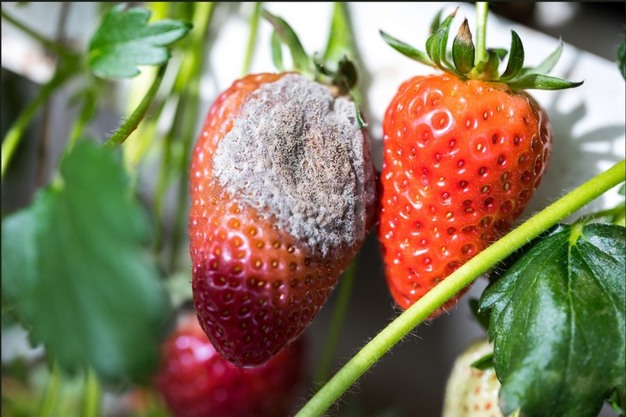Botrytis is an above-ground fungus with many species, found worldwide and capable of infecting a wide variety of plants. When conditions are unfavorable, the damage can become unmanageable. To prevent this, it's essential to understand the following "Botrytis facts."
Botrytis is also known as "gray mold," a name that accurately describes its appearance: a gray powder on leaves, flowers, fruit, or stems. The fungus penetrates plant cells with a pollen tube, kills them, and feeds on the contents of these dead cells. Botrytis prefers soft plant parts, such as soft fruit, petals, and lush leaves. Crops with firm leaves are much less attractive to the fungus and are therefore at lower risk.
 © Koppert
© Koppert
The species Botrytis cinerea can affect more than two hundred different crops, including strawberries and grapes. This fungus has also changed its name and is now officially called Botryotinia fuckeliana. Other Botrytis species are more particular and specialized. Botrytis cinerea can withstand the cold like no other and is active even at very low temperatures (down to 32°F). The fungus survives on plant parts, bulbs, or in the ground. The spores germinate in moist environments or at very high humidity levels (over 93%). Even moisture released by wounds, such as those from leaf picking, is enough for the mold spores to germinate. Therefore, it's important to work cleanly and neatly.
Prevention is key to combating this fungus. This can be achieved by ensuring good, but not overly lush, growth, maintaining adequate air movement in the crop, and disposing of affected parts in a plastic bag. Focusing on plant resilience offers many benefits and reduces the chances of the fungus taking hold. Using Koppert SolutionNopath to treat fungal diseases is an effective way to manage Botrytis, as NoPath can be used on various parts of the plant.
For more information:
Koppert
info@koppert.com
www.koppert.com
